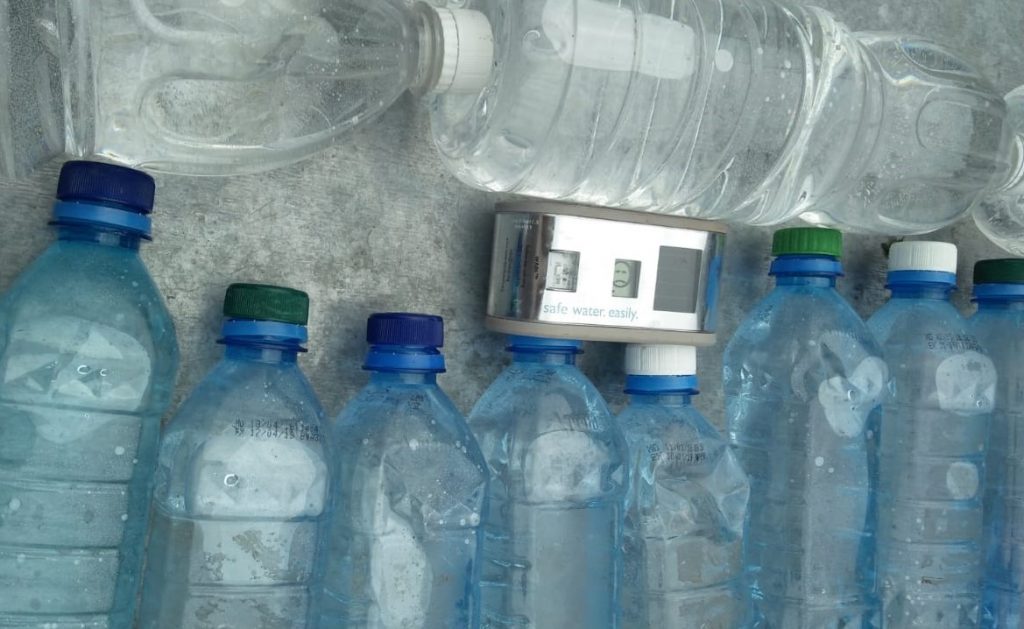Sanitation and Hygiene stand a major challenge in slums due to overpopulation and poor infrastructure. Waterborne diseases are common, with children under five years posing as major victims. SAVO foundation started in 2013, has set a foot forward to ensure a safe solution to safe drinking water through a Technique by name SODIS. We visited their project center, they share on their experience with the Technique so far.
Tell us more about SAVO foundation and what it does
SAVO Foundation aims to address hygiene issues and has a mission to help the community. The community we serve lives under 1dollar a day, buying charcoal and paraffin is thus expensive. It suffers inadequate water supply, poor sanitation, and hygiene. Kibra residents mostly rely on PVC piped water that runs underground to the houses- at times these pipes lie bare and the water can easily be contaminated- making it unsafe for use.
We help the community by training them on how to treat water through a technique – Solar Water Disinfection-SODIS. The project started in 2003 at Eawag- Institute of Research in Switzerland and was launched in Kibra in 2004 and has continually evolved. We have built 30 sanitation blocks in 4 villages including Makini, Mashimoni, Lidi, and Kamimulu.
What is Solar Water Disinfection Technique (SODIS) Technique?
SODIS is a solar water disinfection technique that uses solar -UV rays to treat water. The technique was first launched in UNICEF BOOK by a Palestine biologist- Aftim Acra. Later scientists conducted research to ascertain its effectiveness. In 1991 a lab research proved the technique was an effective water treatment method. Several trials have also been done in different continents including Asia and Africa.
How does the technique Operate?
The technique uses PET bottles and solar energy. One needs clean transparent PET bottles, with a capacity of 3liters and Below.

The bottles are filled to the brim- tightly closed then placed on a reflective surface- Iron sheets, polyvinyl chloride (PVC), or aluminum foil. To measure, the sun intensity a gadget called WADI is used. It has a solar panel that absorbs light and an emoticon that frowns in cold weather. As the intensity increases, a charge bar similar to a phone battery builds up and the emoticon changes to a smiley face. Before we got Wadi, the treatment would take 6-8 hours on a sunny day.
How has the community embraced the technique?
The community has appreciated the technique and some schools have also adopted it. Adventure Light Center formed a club on the same. Water treatment has reduced the instances of absenteeism in schools- commonly associated with water-borne illnesses.

We mostly target pupils and make them our ambassadors as they are always eager to know and most vulnerable in Kibera.
What are some of the benefits of SODIS ?
It’s environmentally friendly as it is dependent on natural light for water treatment. Secondly, the technique is cheap as it utilizes locally available materials. It retains water taste unlike in boiling method or chemical treatment.
What are some of the challenges you encounter during SODIS technique Implementation?
Water cannot be treated when the weather is dull- cloudy over 50 percent. It is also difficult to follow up on projects due to the constant relocation of some residents of Kibra.
SODIS technique cannot treat sewer water, highly turbid water.
What advice would you offer to a youth who has an idea that can foster development?
Most youths await a large amount of capital to implement ideas. My advice is, “ start at your level.” A running project will always attract investors whom you can partner with, in your project.



